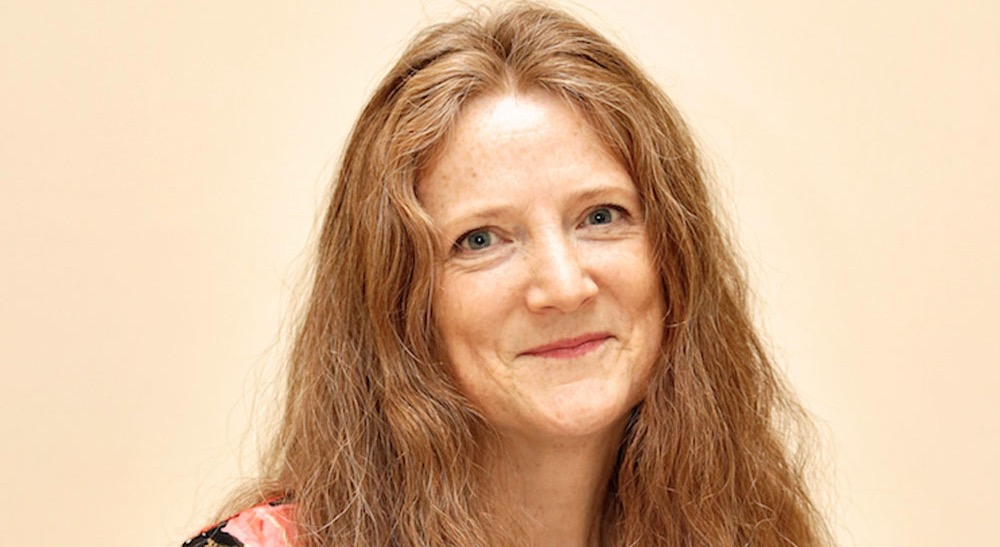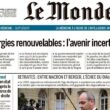Sam Baker is founder-publisher of the podcast “The Shift with Sam Baker”. She was in UK-based women’s and girls’ magazines for 30 years and is a former editor-in-chief of Just17 (EMAP), and Company, Cosmopolitan and Red (Hearst). In 2015, she co-founded the women’s digital media brand, The Pool, with UK broadcaster Lauren Laverne. She is a regular contributor to UK national daily newspapers on a range of women’s issues, but particularly those affecting ‘midlife’ women. She has written five novels and one work of non-fiction – The Shift. She has also been a contributor to Flashes & Flames.
In 2020, she launched the podcast, The Shift, “where I talk to a wide range of women in midlife and beyond about life, love, work, sex, identity, money, health, shoes, representation, vanishing eyebrows… whatever they feel like chatting about. I started it because I wanted to hear these women’s voices, their experiences, their WISDOM. And, it turns out, so did a loads of other people. Millions of you.”
Sam Baker graduated in political science from the University of Birmingham, in the UK.

Why were women’s magazines once so important?
A good magazine used to fill so many holes in a woman’s life – information, entertainment, friendship, advice, allyship, “badge value”. Obviously it would vary wildly according to market positioning but, thinking of the magazines where I made my home – J17, Company, Cosmo, Red – they all had things in common that went far beyond shopping. They spoke her language, tapped into what she was thinking before she’d even thought it, made her feel part of a gang, a community (that whole “a club that you want to be part of that actually wants you in it” thing, that only a good “magazine” brand can pull off). I keep thinking about what Helen Gurley Brown achieved when she reinvented Cosmopolitan in 1960s America. She was the first editor to look at women’s lives as they really were at that point, and embody that in a magazine. That is why a good magazine was so important. It’s no exaggeration to say they played an irreplaceable role in their readers’ lives.
Was it just the internet that changed everything?
It’s not just that the internet provided myriad ways of delivering content, it provided the gateway to so much more: social media. Smart phones. YouTube. Streaming. Podcasts. Suddenly, there were all these demands on the audience’s time, attention and energy. And that’s before you even look at most women’s lives now – with many of them doing full-time+ jobs and picking up more than the slack at home and with childcare. Trying to maintain relationships, friendship, keeping fit etc, who has time to “sit down with a magazine”?
Which basically erased what were magazines’ key USPs: that you gave it your undivided attention. Nobody does that any more. Nobody has time. Or, if they do, they divide that time between countless other things, double or even triple screening, cooking or exercising while listening. The media that are thriving are those that can be consumed while we’re doing other things – which is where podcasts come in. I think there will always be a place for paper products but I don’t believe they will ever again be anything other than niche.
The internet also reduced the barriers to entry. Technically anyone can now start a blog/substack/tiktok/podcast/YouTube channel. Also the internet and particularly social media gave the reader the opportunity to answer back – on the one hand, this was a fantastic opportunity to engage with readers on a daily or hourly basis; on the other, the position of automatic authority and respect many magazines took for granted began to wobble and, ultimately, collapsed.
Authenticity and relatability took over from aspiration. I distinctly remember some research we conducted on Red where it became clear that the aspiration gap was widening and glossy magazines were in danger of falling into it.
The internet also encouraged people to see content as something you shouldn’t pay for. But you only have to look at the number of subscriptions that many people now have – and the number who are still willing to pay for a clutch of newsletters – to understand that people will still pay for content they value.
How could publishers have more successfully maintained the role and importance of women’s magazine brands?
It’s very easy to look back from a position of 2023 knowledge and say that publishers did this that or the other wrong, but I do think there was a degree of complacency. I distinctly remember arguing that magazines were competing with, say, Twitter, Instagram, Netaporter’s magazine, bloggers etc to publishers who didn’t know what I was talking about.
Also – and this is just my experience – I think some publishing companies considered the editor to be a nuisance rather than an asset and enforced a divide between “digital” teams and editorial teams. Editors were seen as blocks to the way forward instead of a conduit to engaging the audience in new ways. This led to an erosion in content quality that was disrespectful to the audience – and many magazines paid the price for that.
It took them a long time to realise publishers they had to go to the readers rather than expecting the readers to go where they were, ie the newsagents in the UK. Times had changed and magazines – at first – seemed not to realise it. The introduction (and explosion in the ownership) of smartphones created a huge change in how former magazine readers consumed content – and spent their time.
I also think there has been a damagingly short-term approach by some publishers. Many tried podcasts and didn’t stick with them because they didn’t make a profit on episode one, or even series one. In the heyday of magazines, they were way more longterm and patient.
Are there any positive exceptions in magazine-like women’s media?
The one that leaps out is the Australian media brand Mamamia, founded by former Australian Cosmo editor Mia Friedman. Its evolution from founder-blog to a multi-platform brand across events, social, community, podcasts, newsletters and more is a masterclass.
Have podcasts filled the gap?
I don’t think any one thing fills the gap, but podcasts have become critical in building and maintaining the relationship that so many women’s magazines once had with their audience.
Why, when and how did you launch The Shift?
After many years editing women’s magazines, I sat back and looked around one day, and thought “WTF?!” I mean, seriously. Where had all the older women gone? And by older, I don’t mean “older”, I just mean not 25. You could count the number of us getting airtime on one hand. And d’you want to know why? Advertisers, that’s why. Because the people who book advertising – white, male, usually under 35 – can’t get their head around the “value” of women they don’t want to… well, you get the picture.
So I decided to do something about it.
The Shift actually started as a book about my own experience of being in my 40s, being perimenopausal and starting a business and recovering from all that. I pitched the book to publishers because I couldn’t believe the lack of information that was out there at that time and how isolated I’d felt. A ‘shift’ occurs when you hit 40ish (could be later, could be earlier, everyone’s different) and it’s arguably the greatest, most interesting, most wisdom-filled time in a woman’s life. The problem is, no one wants to talk about it, let alone visualise what this point in a woman’s life looks like. It’s a time of change, it’s a time of evolution, it’s a time of chucking out all the crap that’s been holding you back.
I decided to do the podcast initially as a marketing tool to promote the book, talking to women about their own experience of “life after 40”. I felt very strongly that women vanished from the workplace at this lifestage, they vanished from our screens and their voices vanished from the radio. I personally just wanted to hear more older women’s voices. I wouldn’t say I was looking for role models so much as evidence of life! My first series was six episodes and, as soon as the first episode launched, it became clear there was a huge demand. I started recording a second series, almost before the second episode of the first series came out and it went from there.
I’m a journalist and editor. I have been interviewing, spotting stories and giving audiences what they want for my entire career, so the nuts and bolts of finding interviewees, identifying subject matter and doing engaging interviews that get talked about is what I’ve always done. The difference here was that podcasting gave me the freedom to have the conversation I thought would resonate with listeners and not have to distil it down to 1,000 words and an out-of-context eyecatching headline.
It was – and still is – very DIY. I bought a Yeti Blue mic from Amazon (on the advice of a podcaster I asked), taught myself to use audio software from YouTube videos and then interviewed six women I knew about their experiences of being in their 40s, 50s and 60s. I have always done everything myself except the editing. I have taught myself to edit but, if I do, it would take me all day (if not all week) to edit a single episode, whereas an expert can do it in a couple of hours. I use an expert.
The key thing for me was meeting and building a relationship with the Acast platform. Georgina Holt, who was UK managing director at the time, had a background in magazines and fully understood how the magazine relationship could be served via audio. Acast handles all my commercial relationships, sells the ads and sponsorships. I upload my podcast. They do the rest. It would have been a much more difficult process without this relationship. And would have taken far longer to turn a healthy profit.
I always felt it was important to me to keep my IP in The Shift, so I decided against working with media partners who offered to pay me to make the podcast but would then have taken ownership of it. This meant that the first couple of series were done entirely at my own expense and with negligible income. But, within a year, it was breaking-even and now I’m reaping the rewards.
What’s the business model and the vision?
Ironically, it’s a very traditional model, approx 60 ads/40 reader revenue but the latter is growing weekly so I expect that balance to tip before too long. The podcast is funded by advertising (both programmatic and “display”) and sponsorship. The newsletter is funded by the reader, paying monthly, annually or as founder members.
I son’t want to be more specific about the financials other than to say The Shift’s revenue is in six figures and, at the moment, costs are negligible. The only real expense is a freelance podcast editor, and associated software costs. The only current staff member is me.
I want to produce more content and get The Shift into the hands/ears/eyes/lives of more women. In short, grow The Shift community and give them more. Currently, it’s a weekly podcast (40 weeks out of 52) and a bi-weekly newsletter (via Substack). On my agenda are a spin-off podcast series, more frequent newsletter content (rising to daily, eventually), including guest posts, more video and live events.
A Podimo executive said this week that the future of podcasts must include subscriptions and/or reader pricing – not advertising. Do you agree?
I certainly agree that it would be insane to rely solely on advertising revenue. I still think 50:50 or 40:60 is optimal but I’m working towards a two-strand approach which keeps the main podcast free and ads-funded “wherever you get your podcasts”, but you will be able to get it ads/sponsor-free by subscribing to The Shift community. Gradually all other extras, including bonus episodes will be delivered this way. (This is a big job for one person so I haven’t done it yet!)
How does your podcast experience inform your views on the future relationship of audio and reading for women’s audiences?
I have long believed that combining the strengths of magazines with the strengths of audio is the future of the magazine relationship and I have spent the last 10 years working on the shape that should take. A combination of newsletters and podcasts puts you in the privileged position of being both in your audience’s ears and inbox. There’s a lot of noise and you have to earn that position every single week. But, with my own podcast having exceeded 2mn downloads and an email open rate of over 60%, even as the newsletter audience grows, I feel confident The Shift is continuing to do that.
How might podcasts change in the next few years in order to strengthen their hold on the women’s market?
This is really hard to say. Everything moves so fast that what looks obvious now can be passé in about five minutes. That said, I do believe that podcasts are the best way of engaging an audience how, where and when they are – and delivering a so-called magazine format. They are by no means “new” and their growth is still surpassing all other media. In 2022, podcast listeners in the UK alone (and, of course, you are never just addressing a domestic audience) reached 21.2mn, 42% of which are women. (Statista). By June this year, 25% of all adults described themselves as “regular podcast listeners”.
When I was growing up in the late 1970s, I would sit waiting for Jackie magazine to land through the letterbox. Now, thousands of women wake-up every Tuesday morning (in the case of The Shift) to download their favourite podcast.
What matters is regularity. Tell people what to expect and when – and never failing to give it to them. Also, don’t forget, the barriers to entry for podcasting are so low. Literally anyone (including me!) can buy a £100 mic and have a word-of-mouth hit without spending a penny on marketing.
What’s your best strategy advice for your erstwhile employers in women’s magazines?
One of the things that has really shocked me is the paucity of newsletters from most British magazine-media. I’ve signed up to a lot to see what they provide and many are irregular, at best, and of extremely variable quality. Others are literally non-existent, or look like they’re written by the office intern in downtime. Not taking this opportunity seriously implies to me that a) you still don’t see yourselves as digital and b) that you don’t value the audience relationship. Yes, email inboxes are stuffed, but you have a unique opportunity to get into your audience’s inbox every day/week/whatever. Make it count.
What’s next for you?
Keep learning, keep listening, keep communicating, and keep growing “The Shift with Sam Baker”.




